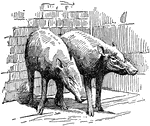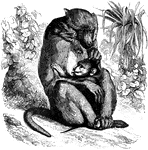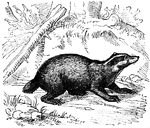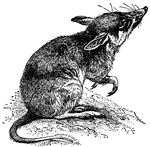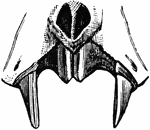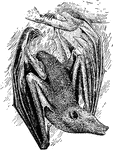The Mammals: A ClipArt gallery contains 91 illustrations of mammals starting with the letter"A" including: aardvark, addax, agouti, alpaca, anteater, antelope, apes, armadillo, and aye-aye.
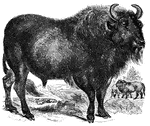
Aurochs
"The European species of the bison. Has a very broad head and arched forehead; the eyes large and dark;…
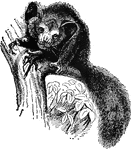
Aye-Aye
"The Aye-aye is an animal of Madagascar, so called from its cry, now referred to the lemur family. It…

Aye-Aye
A lemurine quadruped native to Madagascar. Has an elongated middle finger used to dig grub out of trees.

Babirussa
"Has rather slender, long legs, and is of a grayish color above, with a tint of fawn below. The upper…

Baboon
Monkey, a word loosely applied to apes, baboons, Old and New World monkeys, marmosets and lemurs.
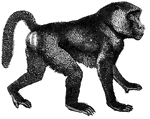
Baboon
Monkey, a word loosely applied to apes, baboons, Old and New World monkeys, marmosets and lemurs.
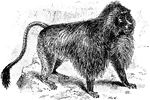
Gelada Baboon
The Gelada (Theropithecus gelada) is a baboon relative in the Cercopithecidae family of Old World monkeys.

Badger
Badgers have long, wide bodies with short legs. They are nocturnal, and eat earthworms, insects, vegetables…
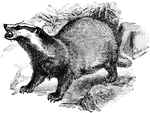
European Badger
About two feet in length of a heavy and clumsy shape, short legs, and short thick tail. Its fur is commonly…
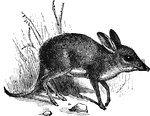
Bandicoot
Notable for the disproportionate development of hind limbs and the reduction of the lateral digits of…

Long Nosed Bandicoot
"Having a long head, with the upper part of the snout much prolonged: the tail is long and tapering;…
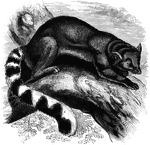
Ring-Tailed Bassaris
"It has a sharp, pointed nose, and a cunning expression, reminding one of a fox or raccoon. The body…

Bat
The bat "never likes to rest upon the ground, and it takes its rest always by hanging itself up by the…

Brown Long-Eared Bat
The Brown Long-Eared Bat (Plecotus auritus) is a mammal in the Vespertilionidae family of evening bats.
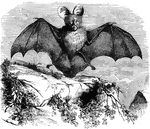
Egyptian Slit-Faced Bat
Nycteris Thebaica. "In this genus both the tail and the interfemoral membrane are greatly developed,…

Scalpriform, Left Lower Incisor of a Beaver
Close-up illustration of scalpriform incisor of a beaver. It is "chisel-shaped; having the character…

